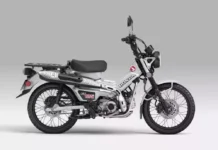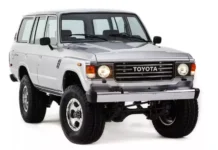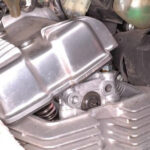When it comes to motorcycles, the engine block and how it operates always fascinate us and make us curious about their working principles. Inside the engine, there is an important component that needs to be adjusted and maintained after a period of operation to help the engine run smoothly and more powerfully. This component is the valve, which directly affects the fuel intake-compression-exhaust process of the engine block.
Surely, many people have heard of the term “motorcycle valve” in repair shops or in everyday stories. So, what is a valve? What is the structure and how does it work? Let’s find out in the following article with us on Tinxe.vn.
What is a valve?
A valve is one of the main parts of the air intake system in a motorcycle engine. It has the function of opening and closing to control the flow of the fuel-air mixture into and out of the combustion chamber. This component is also called “mushroom” by many mechanics and repair shops due to its design that resembles a mushroom.
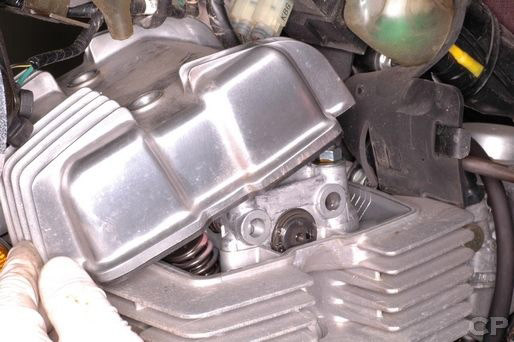
Motorcycle valve located inside the engine head
The parts of the motorcycle valve include the “mushroom,” body, tail, base, spring, and valve guide tube.
- The motorcycle valve usually includes 3 types of mushrooms: flat mushroom, concave mushroom, and convex mushroom. These types of mushrooms have different advantages and disadvantages.
- Valve body: It has the function of guiding the valve to operate.
- Valve tail: It is designed to attach the valve spring.
- Valve base: This part usually has a simple structure, a cylindrical ring with a beveled surface to contact the beveled surface of the mushroom valve.
- Valve guide tube: It helps to prevent erosion of the engine wall at the valve body contact area.
- Valve spring: It acts as a recoil force to tightly close the valve and ensure that the opening and closing process of the valve does not cause impact on the valve’s cam surface.
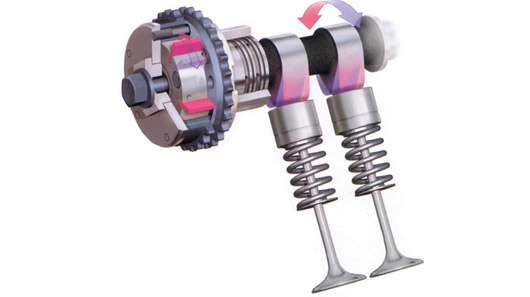
Motorcycle Valve Structure
How does a motorcycle valve work?
In a 4-stroke engine, the valve operates according to the engine’s cycles and has the ability to open and close according to that cycle. Specifically:
– Intake Stroke: When fuel-air mixture is supplied to the engine, the piston moves from the top dead center to the bottom dead center. During this time, the intake valves open and the exhaust valves close, allowing the fuel-air mixture to be drawn into the combustion chamber.
– Compression Stroke: In this stroke, the piston moves from the bottom dead center to the top dead center. All intake and exhaust valves close to compress the fuel-air mixture in the combustion chamber, allowing it to mix well.
– Power Stroke: In this stroke, the spark plug ignites the compressed fuel-air mixture in the combustion chamber. At this time, the piston is compressed and moves from the top dead center to the bottom dead center. Both intake and exhaust valves are closed. After that, the resulting explosion generates power to the engine block.
– Exhaust Stroke: Finally, the piston’s movement path is similar to that in the compression stroke when it moves from the bottom dead center to the top dead center. At this time, the exhaust valves open and the exhaust gases are pushed out of the engine. Then, the exhaust valves close, and the cycle is repeated.
Therefore, if the valve is open, the combustion chamber will not be closed, resulting in a loss of pressure in this area. This leads to difficulty in ignition and reduced power output in a motorcycle.
How to adjust motorcycle valves
The valve is a very important part in the operation of a motorcycle engine. Because of this, when this part has problems, whether severe or mild, it directly affects the engine operation. After a long period of use, if the valve is exposed to the environment, poorly cleaned, and lacks oil, it can cause serious consequences. To adjust this part, we need to perform the following steps.
Firstly, to adjust the motorcycle valve, we need to have a special toolset including: Valve clearance adjuster, valve measuring blade, valve clearance gauge, and some necessary tools such as spanners to open the engine head cover.
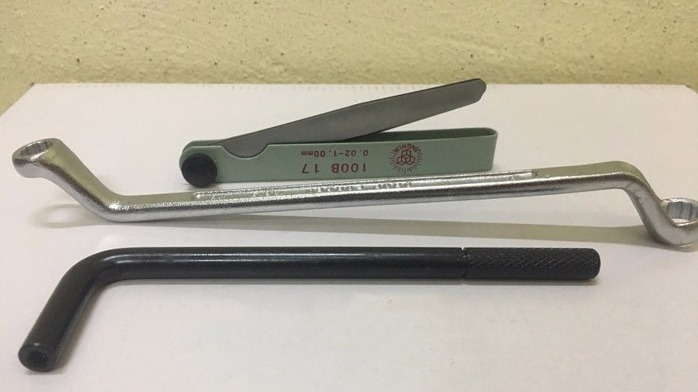
Motorcycle valve adjustment tools
Firstly, we will open the engine head cover of the motorcycle, which is usually located on the top of the engine head, at the protruding position on this cover. After properly removing the cover, use the thumb to press the recoil, turn the flywheel in the cylinder head in the correct direction to fully open the valve. Adjust the intake valves by adjusting the measuring blade to the middle position between the recoil end and the tail of the valve. Use a screwdriver to adjust the recoil, the measuring blade to the point where there is a suitable fit depending on the bike, engine displacement, and condition.
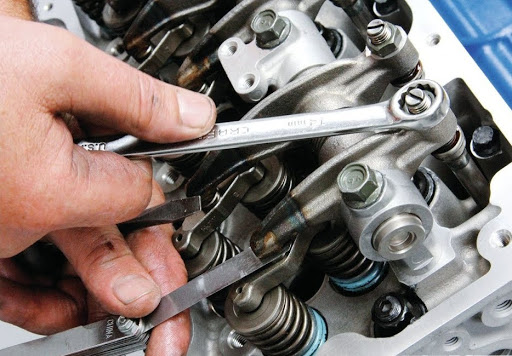
How to adjust motorcycle valves
Hopefully, through this article, you now understand what a valve is and how to adjust it. Adjusting the valve at home is not difficult, but it requires professional knowledge and specific specifications. Therefore, you should still take your motorcycle to a reputable repair shop to have a professional and accurate adjustment, to avoid damaging this sensitive part of the motorcycle engine.
Kuro

























